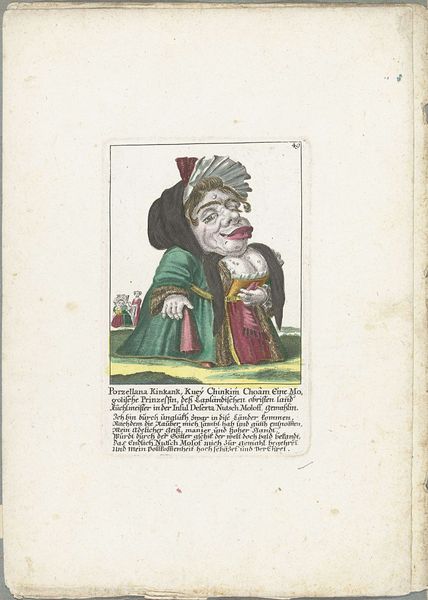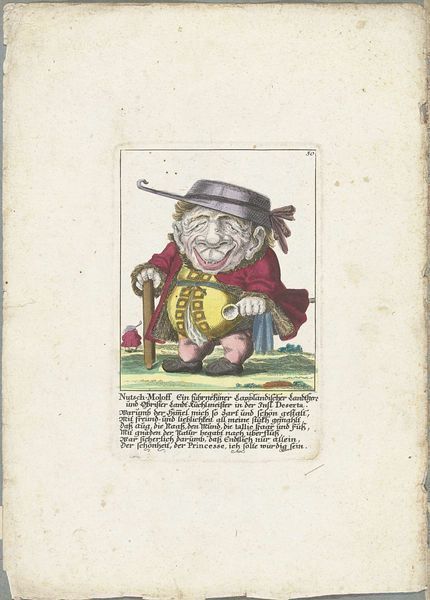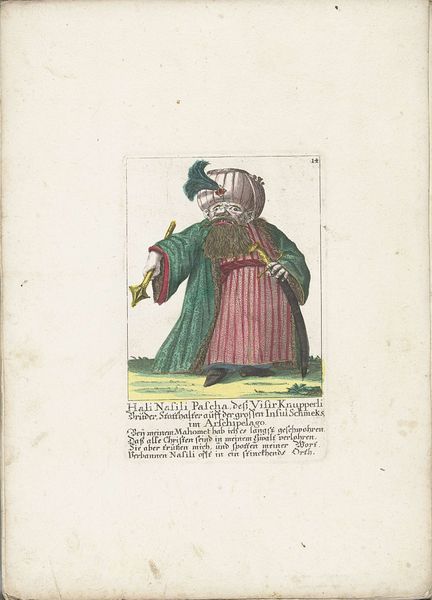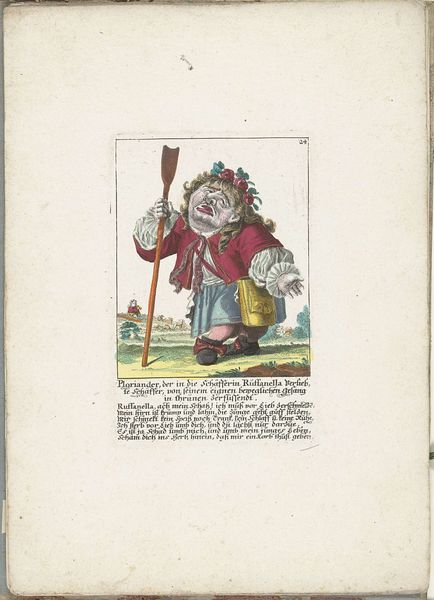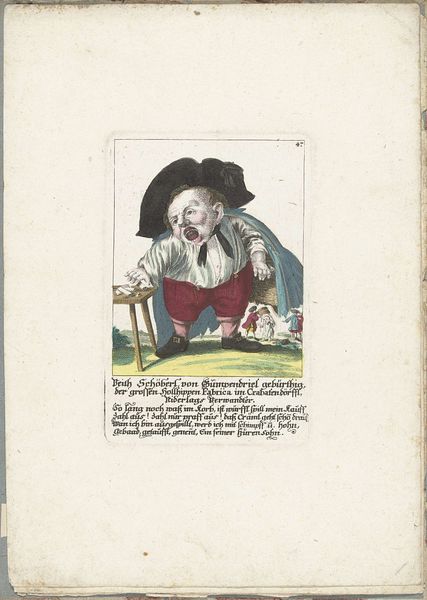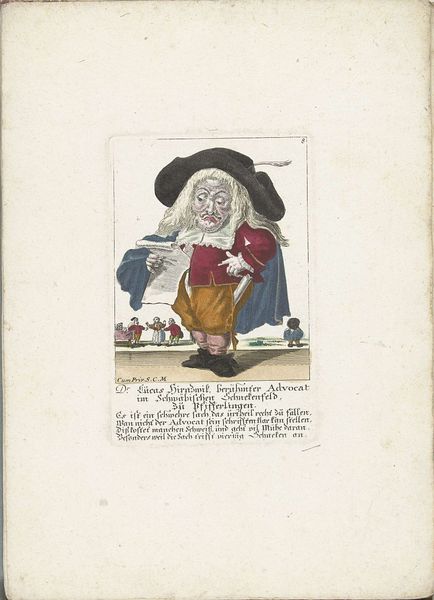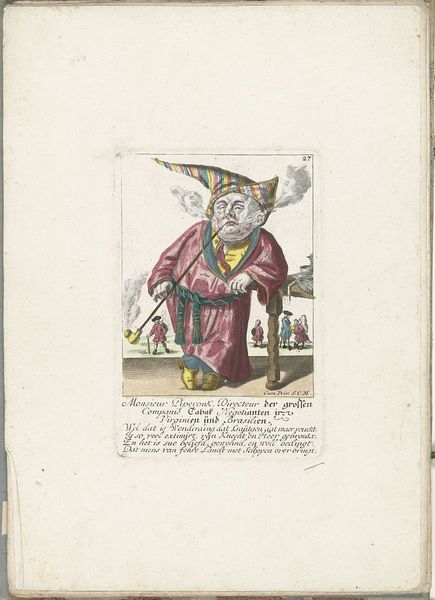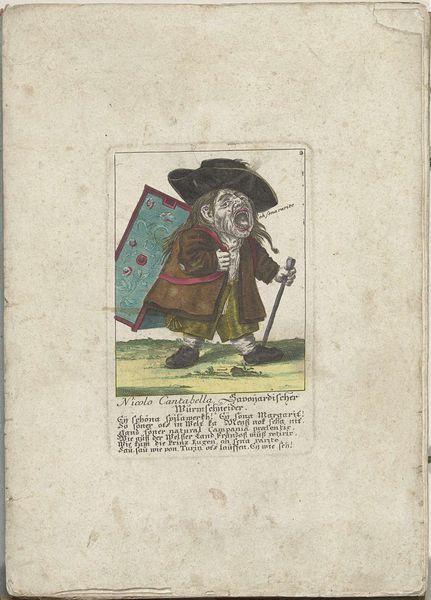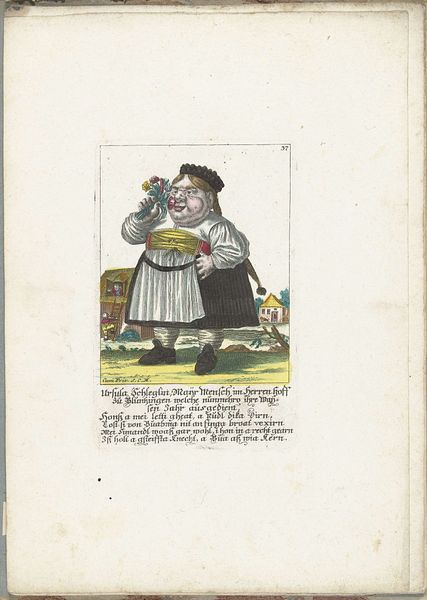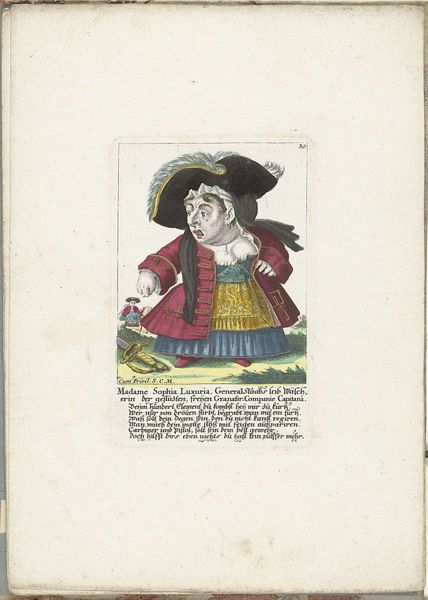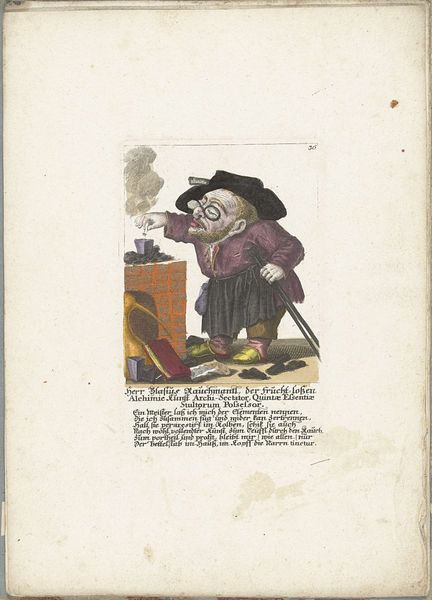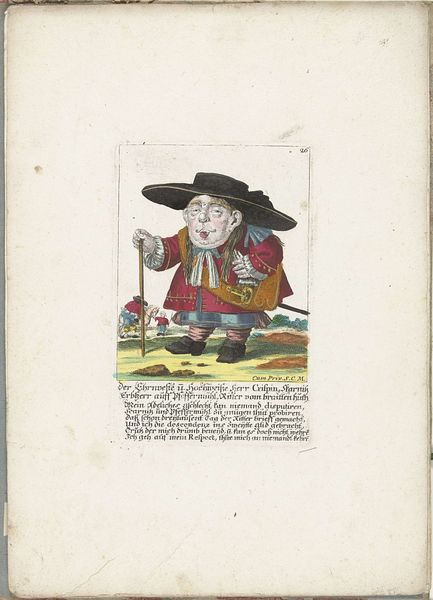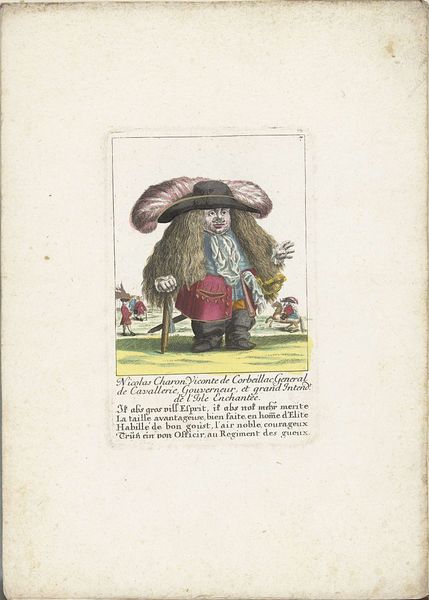
drawing, paper, watercolor, ink
#
portrait
#
drawing
#
caricature
#
paper
#
watercolor
#
ink
#
genre-painting
#
watercolor
#
rococo
Dimensions: height 170 mm, width 110 mm, height 320 mm, width 225 mm
Copyright: Rijks Museum: Open Domain
Around 1710, Martin Engelbrecht created this etching, now held in the Rijksmuseum, depicting the dwarf Ruffanella as a shepherdess. At first glance, the figure’s exaggerated proportions and garish colours strike a playfully grotesque note. Engelbrecht uses line and color to create a figure that’s at once amusing and unsettling. Consider the semiotic implications of Ruffanella’s attire. The shepherdess costume, traditionally associated with innocence and pastoral simplicity, is here destabilized by the figure’s caricatured features. This subversion challenges the established conventions of beauty, power, and representation within the aristocratic circles of the time. Is Engelbrecht using the image of Ruffanella to mock the vain and frivolous aristocracy? Notice the formal tension between the delicate lines of the etching and the subject’s exaggerated features. This tension encapsulates the broader cultural discourse of the period, where established social hierarchies were being questioned. The artwork becomes a space where fixed meanings are contested and re-negotiated.
Comments
No comments
Be the first to comment and join the conversation on the ultimate creative platform.
